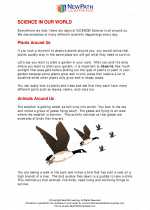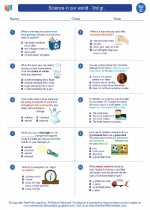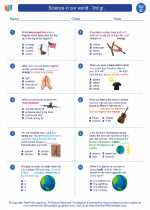Epithelial Tissue
Epithelial tissue is one of the four basic types of animal tissues. It covers the body surfaces, lines body cavities, and forms glands. This tissue is composed of tightly packed cells that form a continuous layer. Epithelial tissue serves several functions, including protection, absorption, secretion, and sensation.
Types of Epithelial Tissue
- Simple Squamous Epithelium: This type of epithelium is a single layer of flattened cells. It is found in the lining of blood vessels, air sacs of lungs, and parts of the kidney.
- Stratified Squamous Epithelium: It consists of multiple layers of flat cells and is present in the skin, mouth, and esophagus.
- Simple Cuboidal Epithelium: This type forms the lining of kidney tubules and glands.
- Simple Columnar Epithelium: Found in the lining of the stomach, intestines, and parts of the respiratory tract.
- Pseudostratified Columnar Epithelium: Appears stratified but all cells are in contact with the basement membrane. It is present in the respiratory tract.
- Transitional Epithelium: This type of epithelium can stretch and is found in the bladder and urinary system.
Functions of Epithelial Tissue
Epithelial tissue performs various functions:
- Protection: It forms a protective barrier against physical injury, pathogens, and dehydration.
- Absorption: Some epithelial cells are specialized for absorption of substances, such as nutrients in the digestive system.
- Secretion: Glandular epithelial cells produce and release substances such as hormones, enzymes, and sweat.
- Sensation: Epithelial tissue contains nerve endings that enable the sensation of touch, pressure, and temperature.
Study Guide
Here are some key points to remember when studying epithelial tissue:
- Understand the different types of epithelial tissue and their locations in the body.
- Learn the functions of epithelial tissue and the specific roles of different types of epithelial cells.
- Recognize the importance of epithelial tissue in protecting the body and facilitating various physiological processes.
- Identify examples of epithelial tissue in everyday life and understand their significance in maintaining overall health.
With a solid understanding of epithelial tissue, you will be able to appreciate its vital role in the human body and its contribution to overall well-being.
.◂Science Worksheets and Study Guides Third Grade. Science in our world - 3rd gr.
Study Guide Science in our world - 3rd gr.
Science in our world - 3rd gr.  Worksheet/Answer key
Worksheet/Answer key Science in our world - 3rd gr.
Science in our world - 3rd gr.  Worksheet/Answer key
Worksheet/Answer key Science in our world - 3rd gr.
Science in our world - 3rd gr.  Worksheet/Answer key
Worksheet/Answer key Science in our world - 3rd gr.
Science in our world - 3rd gr.  Worksheet/Answer key
Worksheet/Answer key Documenting Data
Documenting Data 

 Worksheet/Answer key
Worksheet/Answer key
 Worksheet/Answer key
Worksheet/Answer key
 Worksheet/Answer key
Worksheet/Answer key
 Worksheet/Answer key
Worksheet/Answer key

The resources above cover the following skills:
History and Nature of Science: A student should understand the history and nature of science. A student who meets the content standard should:
Develop an understanding that historical perspectives of scientific explanations demonstrate that scientific knowledge changes over time, building on prior knowledge.
Develop an understanding that scientific knowledge is ongoing and subject to change as new evidence becomes available through experimental and/or observational confirmation(s).